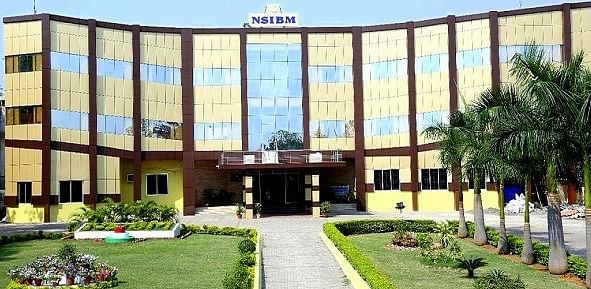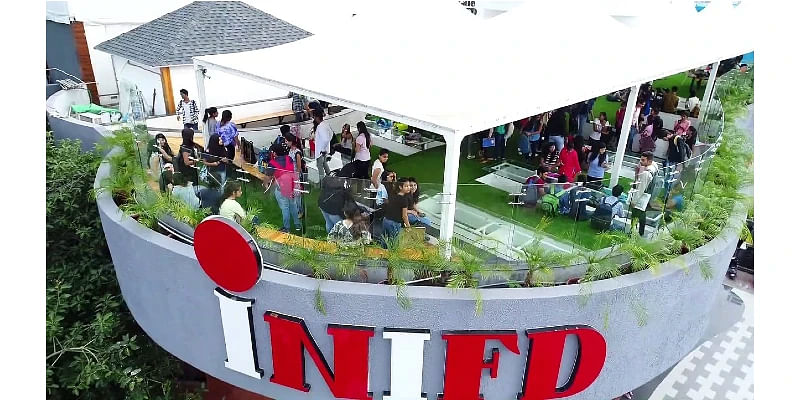Bachelor of Fashion Design Syllabus and Subjects

The Bachelor of Fashion Design syllabus lasts for three years and is curated into six semesters. The Bachelor of Fashion Design course syllabus is specifically for students who have a knack for Fashion and want to learn how the Fashion industry works.
Semester Wise Bachelor of Fashion Design Syllabus
The Bachelor of Fashion Design syllabus focuses on imparting to the students the creativity, management, and entrepreneurial skills required in the fashion industry. The Bachelor of Fashion Design course focuses on building the interpersonal and communicative skills of the students alongside honing their entrepreneurial abilities. The course duration is either three or four years, depending on the institute. The course syllabus PDF is also available online. The detailed Bachelor of Fashion Design subjects list is given below.
Bachelor of Fashion Design First Year Syllabus
The table below contains the subjects of the Bachelor of Fashion Design subjects from the first year:
| Semester I | Semester II |
| Foundation Program in design | Apparel Manufacturing Process |
| History of Western Costumes | Fashion Studies |
| Appreciation of Textiles | Fashion Forecasting and Trend analysis |
Bachelor of Fashion Design Second Year Syllabus
The table below contains the subjects of the Bachelor of Fashion Design subjects from the second year:
| Semester III | Semester IV |
| History of Indian Costumes | Fabric and Trim Research and Sourcing |
| Craft Field Study and Research | Intellectual Property Rights |
| Fashion Merchandising and Management | Draping Techniques |
Bachelor of Fashion Design Third Year Syllabus
The table below contains the subjects of the Bachelor of Fashion Design subjects from the third year:
| Semester V | Semester VI |
| Practical Knowledge | Fashion Photography and Styling |
| Apparels Development and Showcasing | Project |
| Portfolio Development | - |
Specialization-wise Bachelor of Fashion Design Subject Details
There are several specializations that Bachelor of Fashion Design aspirants can opt for when studying the course. Each specialization has its area of focus that will help set up lucrative careers within various fashion industry domains. The list of specialization-wise Bachelor of Fashion Design subjects are:
Textile Design: Students will learn all the skills and techniques in textile design, such as hand-printing, digital techniques and techniques used in handlooms and mills. Graduates can find jobs like Textile Designer, Textile Artist, Installation Artist, Carpet Designer, etc.
Accessory Design: This specialization will teach all the skills and techniques related to accessory design, such as developing competence in materials and production processes, forecasting interpretations and understanding dynamic market trends. The jobs after this specialization are Jewellery Designer, Leather Designer, Accessories Designer, Shoe Designer, etc.
Fashion Technology: Students will learn all the aspects of the design process, such as printing, marketing and merchandising. Graduates can opt for jobs like Illustrator, Designer, Boutique Owner, etc.
Fashion Communication: Students will learn all the communication skills required to navigate the fashion industry. Graduates can find jobs in Fashion Journalism, PR, Event Management, Merchandising, Fashion Advertising, etc.
Fashion Management: This specialization will teach students all the managerial and leadership skills required for effective fashion management. Graduates can find jobs in Supply Chain Management, Retailing, Garment Export, Fashion Marketing, etc.
Knitwear Design: This specialization will teach students all about the knitwear industry, quickly emerging as an essential part of the global industry for fashion apparel.
Bachelor of Fashion Design Subjects
Bachelor of Fashion Design subjects teaches students about the various aspects of fashion, the ever-changing trends, and the developmental features of fashion over the years. The Bachelor of Fashion Designing subjects has both core and elective subjects. A few of the Bachelor of Fashion Design subjects list is given below:
- Foundation Program in Design
- History of Western Costumes
- Appreciation of Textiles
- Apparel Manufacturing Process
- Fashion Studies
- History of Indian Costumes
Bachelor of Fashion Design Course Structure
The Bachelor of Fashion Design syllabus consists of both core and elective subjects. The course curriculum incorporates various assignments, presentations, and projects, apart from the theoretical side. The Bachelor of Fashion Designing course highlights the different cultures and values related to the world of Fashion and its sustainable and worldwide development - while at the same time tracing the ever-changing and recurring trends in the Fashion world.
The course structure is as follows:
- VI Semesters
- Core Subjects
- Elective Subjects
- Practicals
- Projects
- Internships
Bachelor of Fashion Design Teaching Methodology and Techniques
The Bachelor of Fashion Design course curriculum takes different teaching methods to understand the concepts better. The delivery method of the program includes classroom lectures, studio works, design competitions, exhibitions, creative workshops, project reports, market surveys, and internships for practical experience in the design world. Listed below are the teaching methodology and strategies in general:
- Projects
- Conceptualized Learning
- Traditional Classroom-Based Teaching
- Practicals
- Seminars
- Workshops
Bachelor of Fashion Design Projects
Projects help students in getting hands-on experience and training in industrial work. Projects are to be completed by the end of the sixth semester. Some popular Bachelor of Fashion Design projects topics are:
- Production of Formal Occasion Wear for a Young Lady.
- An Adaptation of Women Fabric on Batik for Personal Clothing.
- The Sales and Usage of Secondhand Clothing Among Nigerians.
- Making of Crotch Dress in Fashionable Style.
Bachelor of Fashion Design Reference Books
Bachelor of Fashion Design books is available online and offline by many authors and publications. Reference books are meant for an in-depth understanding of concepts in detail. B.Sc books PDF in Interior Designing are available online. Some of the best reference books are listed below:
| Name of the Books | Authors |
| Patternmaking for Fashion | Helen Joseph Armstrong |
| The Fashion Resource Book: Research for Design | Robert Leach |
| Pattern Cutting and Making Up | Shoben MM |
| Elements of Fashion and Apparel Design | G.J. Sumathi |
















